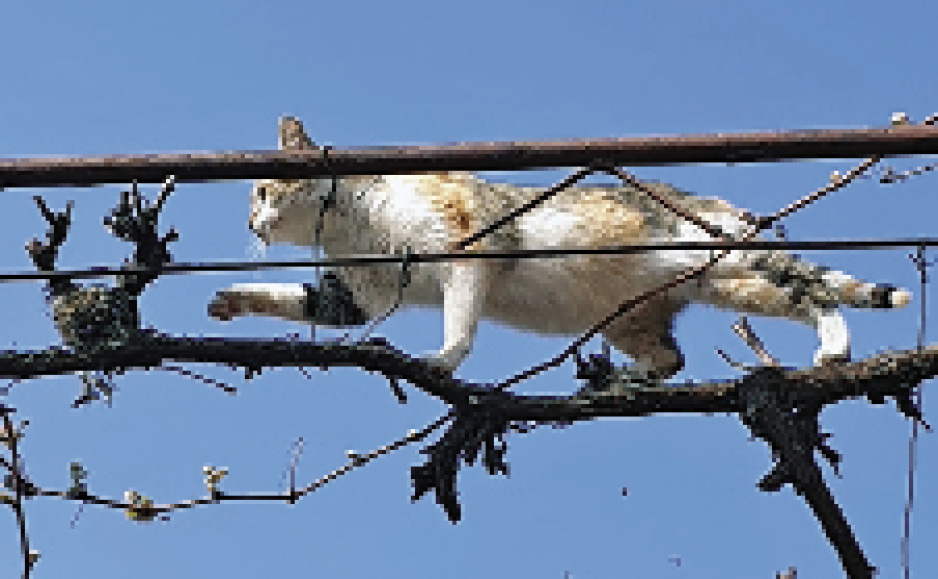A hernia of the diaphragm can be life-threatening. A hernia is a gap in the tissues in the body, usually caused by blunt trauma, that allows organs or other body tissues to bulge out of place.
The diaphragm is a layer of muscle that separates a cat’s chest from her abdomen. When there is a hernia of the diaphragm, organs may move through the tear into the chest cavity and can cause life-threatening conditions. The misplaced organs put pressure on the lungs and prevent a cat’s lungs and heart from functioning normally.
Most of these hernias come from a traumatic incident, such as being hit by a car, falling from a great height, or blunt trauma to the body such from as a kick or blow. Many injured cats are brought to the veterinary clinic with multiple injuries, not just a diaphragmatic hernia.
Some cats will go for a while post trauma with no obvious signs, until the abdominal organs slide through the hernia. Injured cats with large holes in the diaphragm may experience intermittent signs as the stomach, liver, and intestines slide back and forth.
Signs of a Diaphragmatic Hernia
Respiratory difficulty is the most common sign of a diaphragmatic hernia. The cat may take rapid, shallow breaths, prefer to stand or stay down, and keep her head and neck extended to ease breathing. Some cats will show gastrointestinal signs due to the stomach, liver, or intestines being compressed and/or having their blood flow interrupted. You might notice some vomiting and a lack of appetite.
Diagnosis
On examination at the veterinary hospital, the abdomen may feel “empty” as organs that belong there are now in the chest cavity. Heart and respiratory sounds may be muffled. Coupled with a history of trauma, your veterinarian will move on to radiographs to evaluate the situation. About two-thirds of diaphragmatic hernias are evident on radiographs. Ultrasound can help see what’s happening. In rare cases, your veterinarian may need to do a dye (barium) study to evaluate exactly what has happened.
Treatment
Surgery is the only treatment for these hernias. Other injuries may be more life-threatening, and the cat needs to be in the best possible condition to handle anesthesia and surgery. Treatment for shock is often required.
If the stomach has passed through the gap in the diaphragm and gets blocked so that it fills with gas, it can be an emergency due to the increased pressure that results in severe respiratory distress. In these cases, a large bore needle may be passed through the body wall to relieve the gas and shrink the stomach back down. Surgery will then be done as soon as your cat is stable.
The goal of surgery is to replace the abdominal organs back where they belong and suture the diaphragm closed. If liver lobes or parts of the intestines or stomach are badly damaged, resection (removal of the damaged sections) may be required. Tubes may need to be placed in the chest to remove any free air interfering with breathing and for feeding if the gastrointestinal tract has been traumatized too.
Many veterinarians will choose to refer you to a board-certified veterinary surgeon for this repair. Pain management and confinement with rest are important.

Bottom Line
Any hit-by-car cat should be seen by your veterinarian and then observed closely at home, even if she seems fine. Up to 25% of all diaphragmatic hernias are diagnosed weeks after the initial trauma.
An older study found that waiting 24 hours after trauma to improve a cat’s initial status was beneficial, but a 2016 study published in BMC Veterinary Research refutes that. What veterinarians do agree on is that a better outcome is more likely if the cat can be stabilized before surgery.
Of course, if your cat is in severe respiratory distress, she may need immediate veterinary care and surgery. Cats who had trauma long before diagnosis may have adhesions between the misplaced organs and the chest wall. That surgery is more complicated, and prognosis can be guarded.




